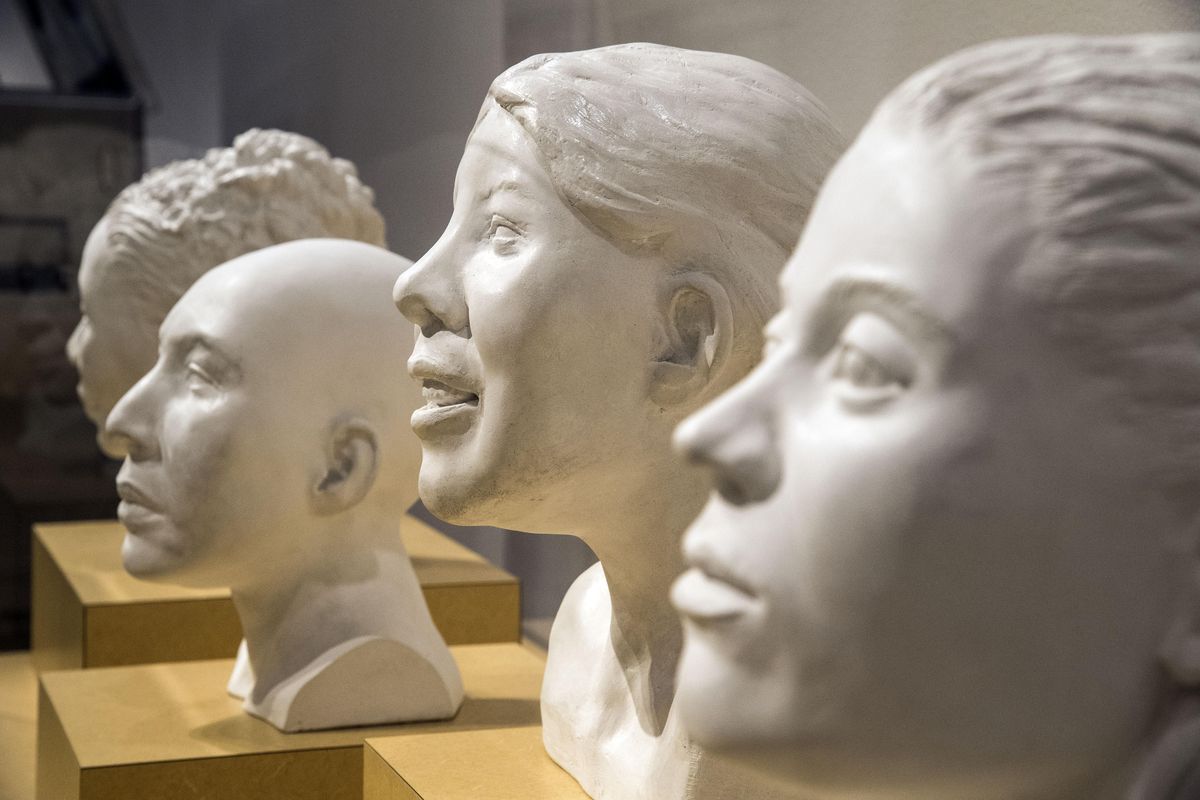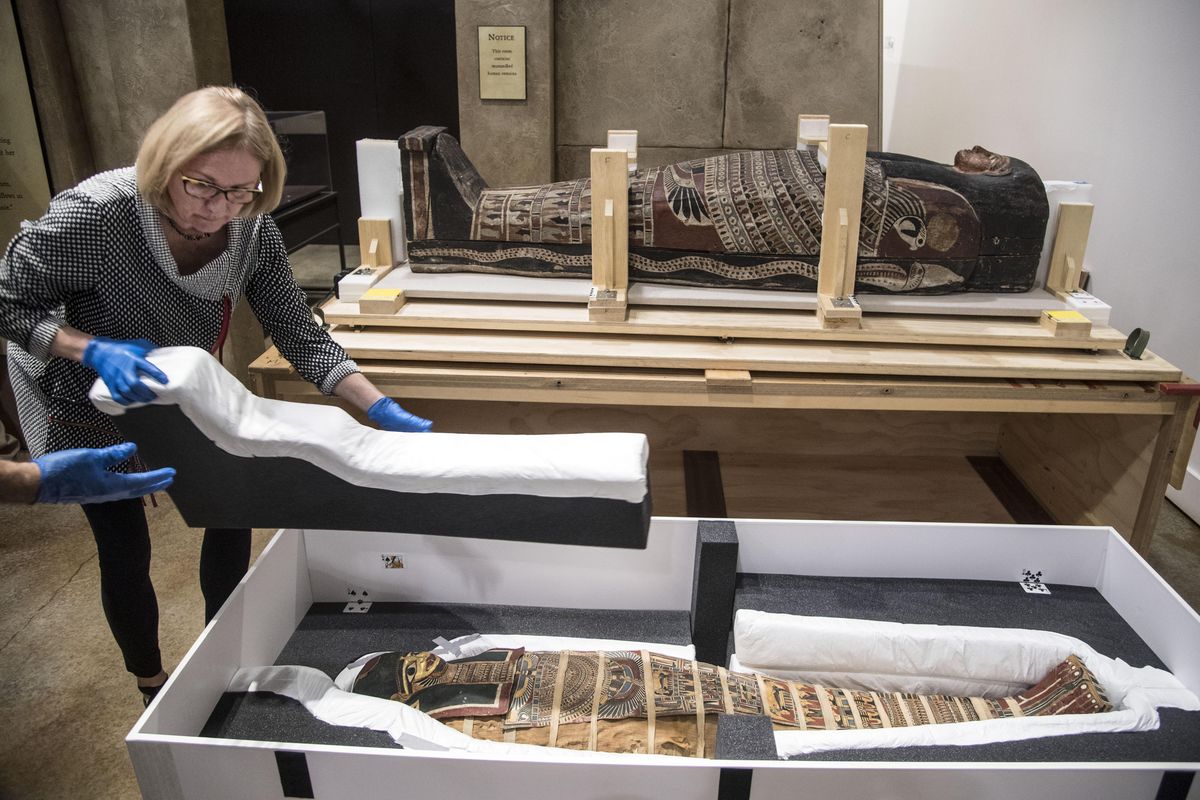Mummy of a teenage girl a highlight of ‘Lost Egypt’ exhibit opening this weekend at the Northwest Museum of Arts and Culture
Annie, the 2,300-year-old mummy, Sept. 20, 2016, at the Northwest Museum of Arts & Culture, is depicted in a bust, second from right. (Dan Pelle / The Spokesman-Review)Buy a print of this photo
For six years, the Egyptian mummy known as Annie has traveled the country, helping educate young and old about her ancient way of life. Or death.
And at every stop along the way, Annie gets a thorough examination from Mimi Leveque, a conservator at the Peabody Essex Museum in Massachusetts.
Leveque is there when Annie’s crate is opened at a new museum. She helps remove the padding that keeps Annie’s movements to a minimum. She is right there as the 2,300-year-old mummy is gently – ever so gently – lifted out of her traveling case and placed on a table.
“This has been on the road for six years now without any damage,” Leveque said. It’s part of her job to make sure that doesn’t happen – she supervises the packing up as well – and she credits the crate designers with helping keep the mummy safe.
Annie is taking up temporary residence at the Northwest Museum of Arts and Culture, where she and her sarcophagus are the highlights of “Lost Egypt: Ancient Stories, Modern Science.” The exhibit features ancient Egyptian funerary objects, animal mummies, cultural objects and science demonstrations.
There is much we don’t know about Annie. Such as her name. “Annie” comes from the fact that she is anonymous, and she comes from the Academy of Natural Sciences in Philadelphia. Her beautifully illustrated sarcophagus is atypical in that the spot where one would normally find identifying text is left blank.
But clearly she was cared for. “No expense was spared,” Leveque said. The shroud that protects her body was once red, a color typically associated with priestly burials. Her cartonnage burial mask – that’s like papier-mache – features gold leaf.
“Everything about her is so sweet,” Leveque said.
Here’s what is known, or at least theorized, based on detailed examinations of the body via CT scans. She comes from Akhmim, on the east side of the Nile River and about 250 miles south of Cairo. She was around 17 years old when she died. It appears she drowned, and judging from the fact that her body began to decompose before mummification, she had likely been in the water for awhile. The exhibit also includes an artist’s rendering of what Annie might have looked like, based on those medical scans.
Scientists believe she drowned in the Nile, “so they gave this anonymous young woman a decent burial,” Leveque said. “ … In the Egyptian religion, they believed that if you died in the Nile, you were sacred, and so you needed to be properly preserved. So we’re speculating that’s what happened to her.”
It’s unclear how long she’s been in America. In the late 1800s, mummies from Akhmim were sold by the Egyptian government to help fund the country’s antiquities service, and many were sold to tourists from North America. The Academy of Natural Sciences acquired her in 1903, and Leveque said she’d been forgotten until the 1970s. Leveque has been working with Annie since 2009, when she was hired to be the conservator of the mummy and coffin. She was part of the conservation team that worked to get her ready for exhibit.
It was clear Annie had been stored upright for a period of time, because the cartonnage case around her feet – complete with a painted-on pair of sandals and “her gorgeous little pedicure,” Leveque said – was damaged. They also made some repairs to the straps that secure the cartonnage piece that runs the length of her body and fixed the nose of her face mask. Otherwise, she is in excellent condition.
Leveque hopes that people seeing Annie come to realize that people really haven’t changed much in a very long time.
“Here was a girl whose family loved her, whose town cherished her, who wanted to make sure that she lived forever, and she’s just like we are now,” she said. “These aren’t aliens. They aren’t from another planet. They are ourselves. She was a girl with hopes and fears and all that we have. I think it puts us in touch with an enormous range of our past.”
The exhibit, which also includes artifacts from the Brooklyn Museum, is set to run through Jan. 6.

